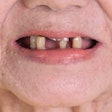
Significant gaps exist in dental care among stroke survivors, according to a study to be presented next week at the American Academy of Neurology (AAN) annual meeting and published in the Journal of Stroke and Cerebrovascular Diseases. Conducted at the University of California, Los Angeles (UCLA), the study is the first to examine the use of dental services by stroke survivors, according to the researchers.
— Nerses Sanossian, M.D., University of
California, Los Angeles
The study, which reviewed data from the National Health Interview Survey (NHIS), found that only 46% of stroke survivors had visited the dentist in the previous year. Women, those who were married, those who had at least a high school education, and those who had visited a primary care physician or specialist in the previous year were the most likely to have recently seen a dentist.
African Americans and those with significant medical comorbidity were the least likely to have visited a dentist in the previous year.
"African Americans have almost twice the stroke prevalence as the general population," noted lead investigator Nerses Sanossian, M.D., an assistant professor of neurology at UCLA. "So the fact that we found African-American stroke survivors were significantly less likely to visit a dentist is a cause for concern, particularly because caries and periodontitis provide a predisposition to stroke."
Dr. Sanossian and his two co-investigators analyzed the characteristics of the 706 people in the 2006 NHIS survey who self-reported having had a stroke in the previous year.
These individuals had an average age of 66.7 years; 56.2% were women, 69.6% were white, and 25.2% were African American. In addition, 92.6% were covered by health insurance. The vast majority (83.7%) was retired, and 65.9% also had at least one medical comorbidity. Forty-six percent had seen a dentist at least once in the previous 12 months.
The researchers performed a multivariate regression analysis that indicated two factors were significantly negatively associated with visiting the dentist: being an African American, with an odds ratio (OR) of 0.63 (95% confidence interval [CI]: 0.43-0.92), and having a medical comorbidity, with an OR of 0.69 (95% CI: 0.48-0.97).
Five other characteristics were associated with a significant positive association:
- Being female (OR 1.83, 95% CI: 1.31-2.57)
- Being married or living with a partner (OR 1.95, 95% CI: 1.37-2.77)
- Having at least a high school education (OR 2.11, 95% CI: 1.51-2.93)
- Having had contact with a primary care physician in the previous year (OR 1.74, 95% CI: 1.04-2.93)
- Having had contact with a medical specialist in the past year (OR 1.41, 95% CI: 1.01-1.97).
Dr. Sanossian told DrBicuspid.com that as a follow-up to this study he would like to examine whether regular dentist visits are associated with a reduction in stroke risk.
Ranjitha Krishna, B.D.S., M.P.H., M.S., an assistant professor of periodontology at the Medical College of Georgia, commented that this was a "much-needed study." However, she agreed that more research, in the form of randomized clinical trials, is needed to establish its clinical implications.
"The key research questions that need to be answered in the future are: Can improved periodontal care reduce cardiovascular risk? And can reducing oral inflammation as a result of periodontal disease diminish the chance of developing cardiovascular disease?" Dr. Krishna said.
The AAN meeting will be held April 10-17, 2010, in Toronto.
Copyright © 2010 DrBicuspid.com















